Gabriele Giuliani, Giovanni Vignale0521821126, 9780521821124, 9780511410260
Table of contents :
Cover……Page 1
Half-title……Page 3
Title……Page 5
Copyright……Page 6
Dedication……Page 7
Contents……Page 9
Preface……Page 19
1.1 A tale of many electrons……Page 23
1.2.1 Three dimensions……Page 27
1.2.2 Two dimensions……Page 30
1.2.3 One dimension……Page 34
1.3.1 Jellium model……Page 35
1.3.2 Coulomb interaction regularization……Page 36
1.3.3 The electronic density as the fundamental parameter……Page 39
1.4.1 Fock space and the occupation number representation……Page 41
1.4.2 Representation of observables……Page 43
Step 1: Definition of creation and destruction operators……Page 44
One-particle operators……Page 46
Two-particle operators……Page 48
1.4.3 Construction of the second-quantized hamiltonian……Page 49
1.5.1 The noninteracting electron gas……Page 51
1.5.2 Noninteracting spin polarized states……Page 53
1.5.3 The exchange energy……Page 54
1.5.5 Exchange and the pair correlation function……Page 56
1.5.6 All-orders perturbation theory: the RPA……Page 58
1.6 The Wigner crystal……Page 61
1.6.1 Classical electrostatic energy……Page 62
1.6.2 Zero-point motion……Page 65
1.7.1 The Quantum Monte Carlo approach……Page 67
1.7.2 The ground-state energy……Page 70
1.7.3 Experimental observation of the electron gas phases……Page 77
1.7.4 Exotic phases of the electron liquid……Page 78
1.8.1 Pressure, compressibility, and spin susceptibility……Page 81
1.8.2 The virial theorem……Page 84
1.8.3 The ground-state energy theorem……Page 85
Exercises……Page 87
2.1 Introduction……Page 91
2.2.2 The Hartree–Fock equations……Page 93
2.2.3 Ground-state and excitation energies……Page 97
2.2.4 Two stability theorems and the coulomb gap……Page 98
2.3 Hartree–Fock factorization and mean field theory……Page 100
2.4 Application to the uniform electron gas……Page 102
2.4.1 The exchange energy……Page 103
2.4.2 Polarized versus unpolarized states……Page 106
2.4.3 Compressibility and spin susceptibility……Page 107
2.5.2 Local stability theory……Page 108
2.5.3 Local and global stability for a uniformly polarized electron gas……Page 111
2.6 Spin density wave and charge density wave Hartree–Fock states……Page 112
2.6.1 Hartree–Fock theory of spiral spin density waves……Page 113
2.6.2 Spin density wave instability with contact interactions in one dimension……Page 117
2.6.3 Proof of Overhauser’s instability theorem……Page 118
2.7 BCS non number-conserving mean field theory……Page 123
2.8 Local approximations to the exchange……Page 125
2.8.1 Slater’s local exchange potential……Page 126
2.8.2 The optimized effective potential……Page 128
Exercises……Page 131
3.1 Introduction……Page 133
3.2.1 Response functions……Page 137
3.2.2 Periodic perturbations……Page 141
3.2.3 Exact eigenstates and spectral representations……Page 142
3.2.4 Symmetry and reciprocity relations……Page 143
3.2.5 Origin of dissipation……Page 145
3.2.6 Time-dependent correlations and the fluctuation–dissipation theorem……Page 147
3.2.7 Analytic properties and collective modes……Page 149
3.2.8 Sum rules……Page 151
3.2.9 The stiffness theorem……Page 153
3.2.10 Bogoliubov inequality……Page 155
3.2.11 Adiabatic versus isothermal response……Page 156
3.3.1 The density–density response function……Page 158
3.3.2 The density structure factor……Page 160
3.3.3 High-frequency behavior and sum rules……Page 161
3.3.4 The compressibility sum rule……Page 162
3.3.5 Total energy and density response……Page 164
3.4.1 The current–current response function……Page 165
3.4.3 The orbital magnetic susceptibility……Page 168
3.4.4 Electrical conductivity: conductors versus insulators……Page 169
3.5.1 Density and longitudinal spin response……Page 173
3.5.2 High-frequency expansion……Page 174
3.5.3 Transverse spin response……Page 175
Exercises……Page 176
4.2 Linear response formalism for non-interacting electrons……Page 179
4.3 Density and spin response functions……Page 181
4.4 The Lindhard function……Page 182
4.4.1 The static limit……Page 184
4.4.2 The electron–hole continuum……Page 188
4.4.3 The nature of the singularity at small q and ω……Page 192
4.4.4 The Lindhard function at finite temperature……Page 194
4.5 Transverse current response and Landau diamagnetism……Page 195
4.6 Elementary theory of impurity effects……Page 197
4.6.1 Derivation of the Drude conductivity……Page 199
4.6.2 The density–density response function in the presence of impurities……Page 201
4.6.3 The diffusion pole……Page 203
4.7 Mean field theory of linear response……Page 204
Exercises……Page 207
5.1 Introduction and guide to the chapter……Page 210
5.2.1 The scalar dielectric function……Page 213
5.2.2 Proper versus full density response and the compressibility sum rule……Page 214
5.2.3 Compressibility from capacitance……Page 216
5.3 The random phase approximation……Page 218
5.3.1.1 Inhomogeneous electron liquid……Page 219
5.3.2 Static screening……Page 220
Classical approach……Page 224
Quantum mechanical calculation……Page 226
Plasmon oscillator strength……Page 227
The failure of hydrodynamics……Page 230
5.3.5 The static structure factor and the pair correlation function……Page 231
5.3.6 The RPA ground-state energy……Page 232
5.3.6.1 Asymptotic high density form of………Page 233
5.3.6.2 Numerical values of … for all densities……Page 235
5.3.6.3 Asymptotic low-density form of ………Page 236
5.3.7 Critique of the RPA……Page 237
5.4 The many-body local field factors……Page 238
5.4.1 Local field factors and response functions……Page 242
5.4.1.1 Density response (paramagnetic case)……Page 243
5.4.1.2 Spin response (paramagnetic case)……Page 244
5.4.2 Many-body enhancement of the compressibility and the spin susceptibility……Page 245
5.4.3 Static response and Friedel oscillations……Page 246
5.4.4 The STLS scheme……Page 248
5.4.5 Multicomponent and spin-polarized systems……Page 250
5.4.6 Current and transverse spin response……Page 252
5.5.1 Test charge–test charge interaction……Page 254
5.5.2 Electron–test charge interaction……Page 255
5.5.3.1 The Kukkonen–Overhauser interaction (paramagnetic case)……Page 256
5.5.3.2 Spin polarized and multicomponent systems……Page 259
5.5.3.3 Inclusion of lattice screening……Page 261
5.6.1.1 Limit of q ………Page 262
5.6.1.2 Limit of q ………Page 263
5.6.1.3 The 2kF “hump” puzzle……Page 266
5.6.1.4 High-frequency limit……Page 267
5.6.2.2 Limit of q…0 and finite frequency……Page 268
5.6.2.3 Limit of q…0 and low frequency……Page 271
5.6.2.4 Limit of q………Page 272
5.6.2.5 Calculation of the high frequency limit of………Page 273
5.7 Theories of the dynamical local field factor……Page 275
5.7.1 The time-dependent Hartree–Fock approximation……Page 276
5.7.2 First order perturbation theory and beyond……Page 279
5.7.3 The mode-decoupling approximation……Page 281
5.8 Calculation of observable properties……Page 282
5.8.1 Plasmon dispersion and damping……Page 283
5.8.2 Dynamical structure factor……Page 285
5.9 Generalized elasticity theory……Page 286
5.9.1 Elasticity and hydrodynamics……Page 287
5.9.2 Visco-elastic constants of the electron liquid……Page 290
Exercises……Page 292
6.1 Introduction……Page 297
6.2.1 Time-ordered correlation function……Page 298
6.2.2 The adiabatic connection……Page 300
6.2.3 The non-interacting Green’s function……Page 302
6.2.4 Diagrammatic perturbation theory……Page 304
6.2.5 Fourier transformation……Page 310
6.2.6 Translationally invariant systems……Page 312
6.2.7 Diagrammatic calculation of the Lindhard function……Page 313
6.2.8 First-order correction to the density–density response function……Page 314
6.3 Integral equations in diagrammatic perturbation theory……Page 316
6.3.1 Proper response function and screened interaction……Page 317
6.3.2 Green’s function and self-energy……Page 319
6.3.3 Skeleton diagrams……Page 322
6.3.4 Irreducible interactions……Page 324
6.3.5 Self-consistent equations……Page 333
6.3.6 Two-body effective interaction: the local approximation……Page 335
6.3.7 Extension to broken symmetry states……Page 338
6.4 Perturbation theory at finite temperature……Page 341
Exercises……Page 346
7.1 Introduction……Page 349
7.2.1 The variational principle for the density……Page 350
7.2.2 The Hohenberg–Kohn theorem……Page 353
7.2.3 The Kohn–Sham equation……Page 355
7.2.5 The exchange-correlation energy functional……Page 357
7.2.6 Exact properties of energy functionals……Page 360
7.2.7 Systems with variable particle number……Page 362
7.2.8 Derivative discontinuities and the band gap problem……Page 364
7.2.9 Generalized density functional theories……Page 368
7.3.1 The Thomas-Fermi approximation……Page 370
7.3.2 The local density approximation for the exchange-correlation potential……Page 371
7.3.3 The gradient expansion……Page 375
7.3.4 Generalized gradient approximation……Page 377
7.3.4.2 GGA for exchange……Page 378
7.3.4.3 GGA for correlation……Page 380
7.3.4.4 The exchange-correlation energy……Page 382
7.3.5 Van der Waals functionals……Page 383
7.4 Current density functional theory……Page 386
7.4.1 The vorticity variable……Page 387
7.4.2 The Kohn–Sham equation……Page 388
7.4.3 Magnetic screening……Page 389
7.4.4 The local density approximation……Page 390
7.5.1 The Runge–Gross theorem……Page 392
7.5.2 The time-dependent Kohn–Sham equation……Page 396
7.5.3 Adiabatic approximation……Page 398
7.5.4 Frequency-dependent linear response……Page 399
7.6.1 Finite systems……Page 400
7.6.2 Infinite systems……Page 404
7.7 Reason for the success of the adiabatic LDA……Page 407
7.8 Beyond the adiabatic approximation……Page 408
7.8.2 The “ultra-nonlocality” problem……Page 410
7.9 Current density functional theory and generalized hydrodynamics……Page 412
7.9.1 The xc vector potential in a homogeneous electron liquid……Page 414
7.9.2 The exchange-correlation field in the inhomogeneous electron liquid……Page 416
7.9.3 The polarizability of insulators……Page 417
7.9.5 Linewidth of collective excitations……Page 419
Exercises……Page 421
8.1 Introduction and overview of the chapter……Page 427
8.2 The Landau Fermi liquid……Page 428
8.3.1 The Landau energy functional……Page 432
8.3.2 The heat capacity……Page 434
8.3.3 The Landau Fermi liquid parameters……Page 435
8.3.4 The compressibility……Page 436
8.3.5 The paramagnetic spin response……Page 438
8.3.6 The effective mass……Page 440
8.3.7 The effects of the electron–phonon coupling……Page 443
8.3.8 Measuring m………Page 445
8.3.9 The kinetic equation……Page 449
8.3.10 The shear modulus……Page 451
8.4.1 General formulas……Page 454
8.4.2 Three-dimensional electron gas……Page 457
8.4.3 Two-dimensional electron gas……Page 459
8.4.4 Exchange processes……Page 461
8.5 Microscopic underpinning of the Landau theory……Page 463
8.5.1 The spectral function……Page 464
8.5.1.1 Noninteracting electron gas……Page 466
8.5.1.2 Interacting electron gas……Page 467
8.5.1.4 Green’s function and self-energy……Page 468
8.5.1.5 Measuring the spectral function……Page 469
8.5.2 The momentum occupation number……Page 471
8.5.3 Quasiparticle energy, renormalization constant, and effective mass……Page 472
8.5.4 Luttinger’s theorem……Page 476
8.5.5 The Landau energy functional……Page 479
8.6 The renormalized hamiltonian approach……Page 483
8.6.1 Separation of slow and fast degrees of freedom……Page 484
8.6.2 Elimination of the fast degrees of freedom……Page 486
8.6.3 The quasiparticle hamiltonian……Page 487
8.6.4 The quasiparticle energy……Page 490
8.6.5 Physical significance of the renormalized hamiltonian……Page 491
8.7 Approximate calculations of the self-energy……Page 493
8.7.1 The GW approximation……Page 494
8.7.2 Diagrammatic derivation of the generalized GW self-energy……Page 497
8.8 Calculation of quasiparticle properties……Page 500
8.9 Superconductivity without phonons?……Page 506
8.10 The disordered electron liquid……Page 508
8.10.1 The quasiparticle lifetime……Page 511
8.10.2 The density of states……Page 513
8.10.3 Coulomb lifetimes and weak localization in two-dimensional metals……Page 515
Exercises……Page 516
9.1 Non-Fermi liquid behavior……Page 523
9.2 The Luttinger model……Page 525
9.3 The anomalous commutator……Page 531
9.4 Introducing the bosons……Page 534
9.5 Solution of the Luttinger model……Page 536
9.5.1 Exact diagonalization……Page 537
9.5.2 Physical properties……Page 539
9.6.1 Construction of the fermion fields……Page 541
9.6.2 Commutation relations……Page 544
9.6.3 Construction of observables……Page 545
9.7.1 Analytical formulation……Page 547
9.7.2 Evaluation of the averages……Page 548
9.7.3 Non-interacting Green’s function……Page 550
9.7.4 Asymptotic behavior……Page 552
9.8 The spectral function……Page 553
9.10 Density response to a short-range impurity……Page 556
9.11 The conductance of a Luttinger liquid……Page 560
9.12 Spin–charge separation……Page 564
9.13 Long-range interactions……Page 568
Exercises……Page 569
10.1 Introduction and overview……Page 572
10.2 One-electron states in a magnetic field……Page 577
10.2.1 Energy spectrum……Page 578
10.2.2 One-electron wave functions……Page 580
10.2.3 Fock–Darwin levels……Page 582
10.2.4 Lowest Landau level……Page 583
10.2.5 Coherent states……Page 584
10.2.6 Effect of an electric field……Page 585
10.2.7 Slowly varying potentials and edge states……Page 586
10.3.1 Phenomenology……Page 589
10.3.2 The “edge state” approach……Page 591
10.3.3 Streda formula……Page 593
10.3.4 The Laughlin argument……Page 595
10.4 Electrons in full Landau levels: energetics……Page 597
10.4.2 Density matrix……Page 598
10.4.4 Exchange energy……Page 599
10.4.5 The “Lindhard” function……Page 600
10.4.6 Static screening……Page 601
10.4.8 Fractional filling factors……Page 603
10.5 Exchange-driven transitions in tilted field……Page 605
10.6 Electrons in full Landau levels: dynamics……Page 606
10.6.3 Time-dependent Hartree–Fock theory……Page 607
10.6.4 Kohn’s theorem……Page 611
10.7.1 One full Landau level……Page 613
10.7.2 Two-particle states: Haldane’s pseudopotentials……Page 614
10.8.1 A most elegant educated guess……Page 616
10.8.2 The classical plasma analogy……Page 617
10.8.3 Structure factor and sum rules……Page 620
10.8.4 Interpolation formula for the energy……Page 622
10.9 Fractionally charged quasiparticles……Page 623
10.12 Incompressibility of the quantum Hall liquid……Page 628
10.13.1 The single mode approximation……Page 631
10.13.2 Effective elasticity theory……Page 637
10.13.3 Bosonization……Page 641
10.14.1 An exact sum rule……Page 643
10.14.2 Independent boson theory……Page 644
10.15 Chern–Simons theory……Page 647
10.15.1 Formulation and mean field theory……Page 648
10.15.2 Electromagnetic response of composite particles……Page 650
10.16 Composite fermions……Page 653
10.17 The half-filled state……Page 659
10.18 The reality of composite fermions……Page 661
10.19 Wigner crystal and the stripe phase……Page 663
10.20.1 Sharp edges vs smooth edges……Page 666
10.20.2 Electrostatics of edge channels……Page 667
10.20.3 Collective modes at the edge……Page 671
10.20.4 The chiral Luttinger liquid……Page 675
10.20.5 Tunneling and transport……Page 677
Exercises……Page 684
Appendix 1: Fourier transform of the coulomb interaction in low dimensional systems……Page 689
Appendix 2: Second-quantized representation of some useful operators……Page 692
A3.1 Normal ordering with respect to the vacuum……Page 696
A3.2 Wick’s theorem……Page 697
A3.3 Normal ordering with respect to a “Fermi sea”……Page 699
A3.4 Wick’s theorem at finite temperature……Page 700
A4.1 The pair correlation function……Page 704
A4.2 The static structure factor……Page 708
Appendix 5: Calculation of the energy of a Wigner crystal via the Ewald method……Page 710
Appendix 6: Exact lower bound on the ground-state energy of the jellium model……Page 712
Appendix 7: The density–density response function in a crystal……Page 715
Appendix 8: Example in which the isothermal and adiabatic responses differ……Page 717
Appendix 9: Lattice screening effects on the effective electron–electron interaction……Page 719
Appendix 10: Construction of the STLS exchange-correlation field……Page 722
A11.1 Wave vector dependence……Page 724
A11.2 Frequency dependence……Page 726
Appendix 12: Real space-time form of the noninteracting Green’s function……Page 729
A13.1 Expression in terms of the self-energy……Page 731
A13.2 Linked-cluster expansion……Page 732
Appendix 14: Spectral representation and frequency summations……Page 735
Appendix 15: Construction of a complete set of wavefunctions with a given density……Page 737
Appendix 16: Meaning of the highest occupied Kohn–Sham eigenvalue in metals……Page 739
Appendix 17: Density functional perturbation theory……Page 741
Appendix 18: Density functional theory at finite temperature……Page 743
Appendix 19: Completeness of the bosonic basis set for the Luttinger model……Page 746
Appendix 20: Proof of the disentanglement lemma……Page 748
Appendix 21: The independent boson theorem……Page 750
A22.1 Noninteracting kinetic energy……Page 754
A22.3 Noninteracting structure factor……Page 755
A22.4 Exchange energy……Page 756
A22.5 Correlation energy……Page 757
Appendix 23: Density matrices in the lowest Landau level……Page 758
Appendix 24: Projection in the lowest Landau level……Page 760
Appendix 25: Solution of the independent boson model……Page 762
References……Page 764
Index……Page 787
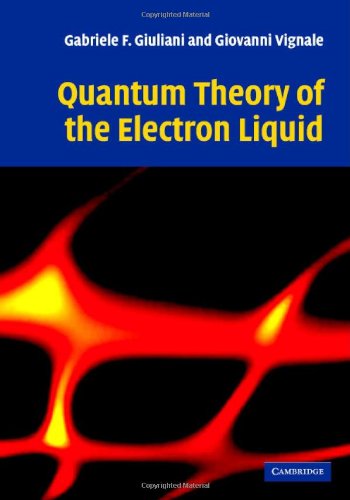
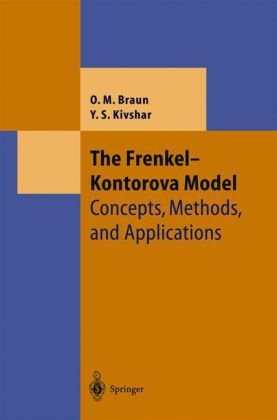
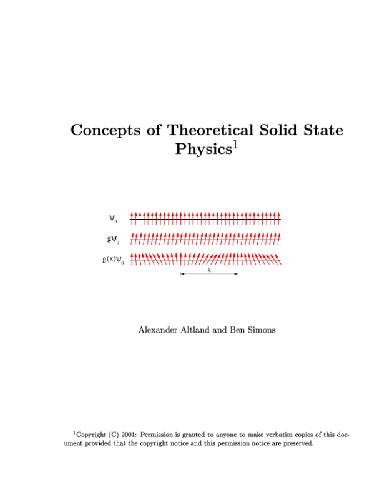
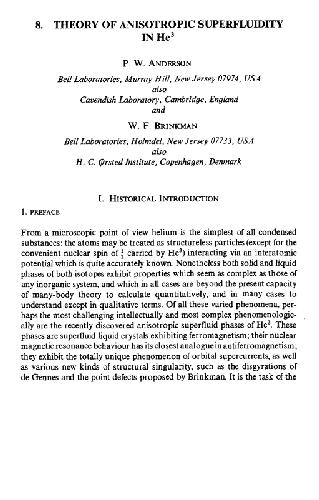
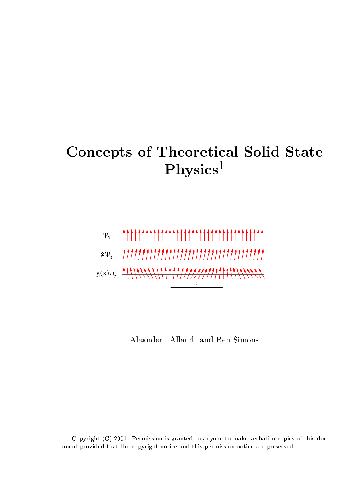
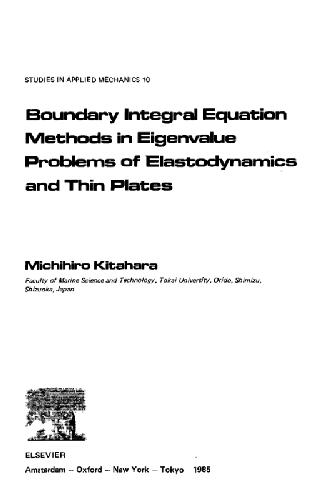

Reviews
There are no reviews yet.